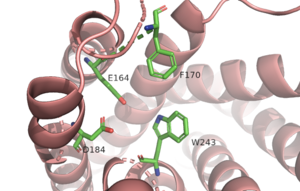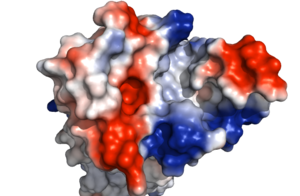Sandbox Reserved 1719
From Proteopedia
Human Itch G-Coupled Protein Receptors
IntroductionG protein-coupled receptors (GPCRs) are the largest class of integral membrane proteins. GPCRs are divided into five families; the rhodopsin family (class A), the secretin family (class B), the glutamate family (class C), the frizzled/taste family (class F), and the adhesion family.[1] All GPCRs contain a similar seven α-helical transmembrane domain that once bound to its ligand, undergoes a conformational change and tranduces a signal to coupled, heterotrimeric G proteins. The initiation of intracellular signal pathways occur in response to stimuli such as light, Ca2+, amino acids, nucleotides, odorants, peptides, and other proteins, and accomplishes many interesting physiological roles. [1] GPCRs[2].
Structure overviewActive SiteSub-pocket 1Sub-pocket 2Ligand interactionsAgonist
Antagonist Mechanism OverviewGiGqImplications for disease and clinical relevanceSee Also
This is a sample scene created with SAT to by Group, and another to make of the protein. You can make your own scenes on SAT starting from scratch or loading and editing one of these sample scenes. </StructureSection> References
Student contributorsMadeline Beck Joey Gareis | ||||||||||||


